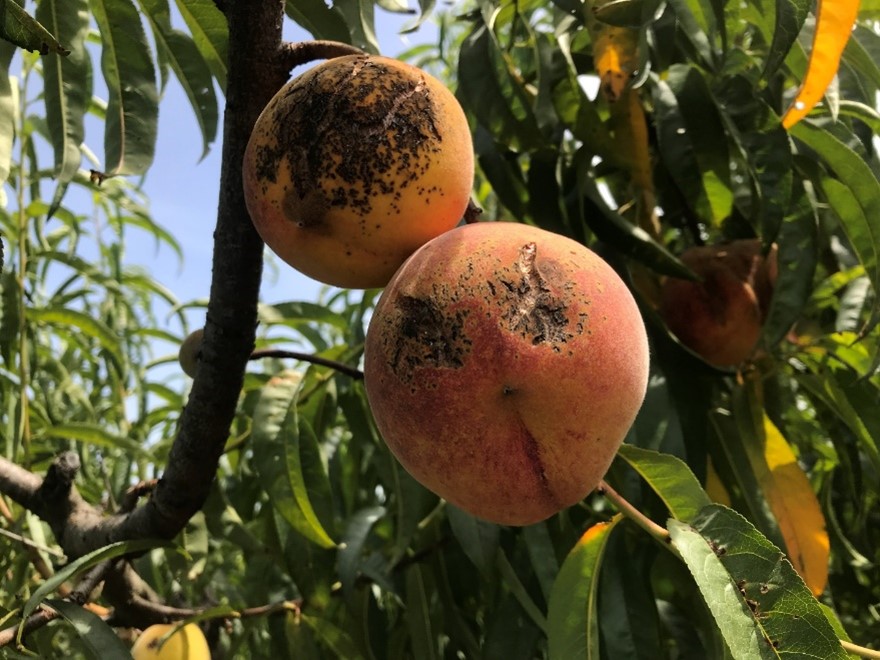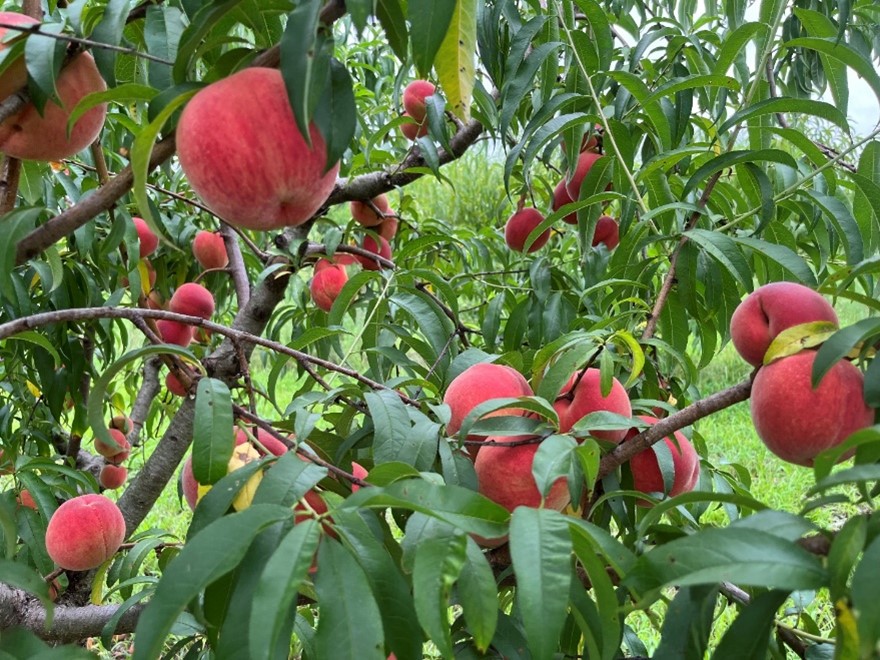In roundtable peach meetings in recent years, southeastern growers often highlight that bacterial spot remains a leading yield-limiting disease. Spray management is ineffective, and the disease has become more endemic frequently and causes significant losses even in some so-called tolerant/resistant cultivars. The increasing disease incidence emphasize more attention to the epidemiology of the disease on current-in-use cultivars. An update of bacterial spot in peaches will be given in this article, including the status of genetic markers and additional thoughts on breeding for resistance to the disease.
It is well known that bacterial spot in peaches is caused by Xanthomonas arboricola pv. pruni (XAP). Symptoms include varying forms and severity of fruit spots, leaf spots and/or twig cankers (Fig. 1), as shown by more information and photos online, such as https://www.aces.edu/blog/topics/crop-production/bacterial-spot-treatment-in-peaches/ and https://www.cabidigitallibrary.org/doi/10.1079/cabicompendium.56968. The bacterial pathogen can thrive favorably in warm, humid, rainy and windy conditions and infect peach tissues through natural openings or wounds to develop symptoms. However, there is little knowledge of the host-pathogen interaction affecting the epidemiological efficiency of the disease. It is also difficult to establish a reliable, efficient evaluation protocol or genetic standard to determine the susceptible/resistant level of a peach cultivar (host genotype) and know how many virulent/avirulent XAP strains (pathogens) in a peach orchard and the surrounding area. These are some important research subjects critically needing more studies to gain knowledge and find solutions for the bacterial spot problem.
Breeding resistance to the disease has always been one of the top priorities, primarily through using known “resistant” parents and selecting healthy and asymptomatic hybrids (Fig. 2). As a part of collaborative research and breeding effort, mapping of resistant genes and development of genetic markers for resistance to the disease have been pursued over the past decades. Some progress has been made and genetic markers for peach resistance to the disease have been tested in several labs, suggesting they currently are not as feasible as expected and subjected to continuing optimization. One main reason is that the trait is quantitative, in other words, is controlled by polygenes but not by a single gene. These polygenes presumably interact differently with different unknown XAP strains to express peaches’ resistance or susceptibility to the disease and develop symptoms in different organs/tissues. Another reason is that it is difficult to know or test all XAP strains around a production area to determine the resistance or susceptibility of a peach genotype (cultivar or selection) to all strains. According to the gene-for-gene hypothesis, emerging high susceptibility in some so-called tolerant/resistant cultivars likely is caused by new virulent XAP strains. While we continue to optimize genetic markers for resistance to bacterial spot, we also need to establish more reliable, efficient evaluation methods to distinguish peach resistance and susceptibility and develop cultivars with broad durable resistance to different strains.

Fig. 1 Byron peach selection with severe bacterial spot symptoms on almost all fruits and some leaves.

Fig. 2 Byron peach selection with no bacterial spot symptoms on fruits or leaves.